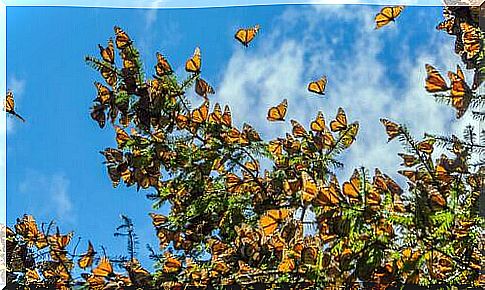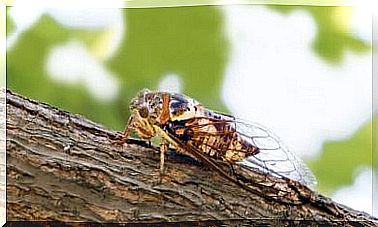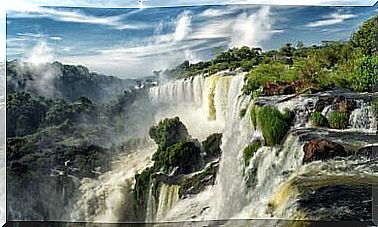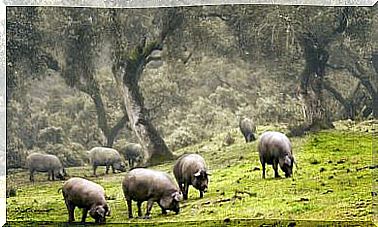The Incredible Odyssey Of The Monarch Butterfly
The monarch butterfly is one of the most famous in the world. This is due to its characteristic orange color and the very long migratory route it travels every year.
This insect lives in almost all of America, in Canada and north of South America. Let’s find out the characteristics of the monarch butterfly.
The color of the monarch butterfly
The adult monarch butterfly ( Danaus archippus ) possesses a bright color. The outer part of the wings is orange with crossed black lines. Instead, the inside is dull orange.
This color distinction helps her to survive. The internal part, due to its opacity, manages to disguise itself among the bark of trees and between other surfaces.
At the same time, the much more conspicuous exterior serves as a visual warning to predators, as the monarch is poisonous if eaten. This type of warning is called aposematism or warning staining.
This is an evolutionary strategy due to the fact that most predators associate flashy colors, such as orange and yellow, with poison.
In the case of the monarch butterfly, it contains cardiac glycosides within its body, toxic substances for some animals. These properties are acquired by eating Asclepias, a type of plant. However, there are some species of birds and rodents that are immune to this type of poison.

Life cycle of the monarch butterfly
The monarch butterfly can be 8 to 10 cm long, and distinguishing the male from the female is easy. Males are somewhat larger and have a black spot in the center of each wing on the back. Adults weigh approximately half a gram.
The life of the monarch butterfly takes place in 4 stages:
- It all begins with the deposition of the eggs on the leaves of some plants of the genus Asclepias. The eggs measure no more than 2 millimeters and hatch after 4-8 days.
- This is how the larvae are born, which feed on the leaf on which they were deposited by the mother, becoming robust caterpillars with yellow, black and white streaks throughout the body. They stay like this for more or less two weeks, depending on the amount of food they consume.
- Once sufficiently fed, the caterpillars prepare to become pupae, initiating their process of metamorphosis. The chrysalis is lime green, with gold spots and a black band. This process takes 10 days.
- At the end of the transformation, the monarch butterfly emerges from the chrysalis: the duration of its life is estimated based on the moment of its birth. Those that are born in spring and summer live for two to six weeks. However, those that are born in late summer and early autumn live up to 8 months. These are the ones who make an incredible odyssey: a massive migration from Canada to Mexico, including the return.
Massive migration
The North American monarch butterfly born in late summer is the one that travels from Canada to central Mexico or California. The distance it travels exceeds 5000 km.
He does this to escape the winter, so every autumn he embarks on this journey, returning in the spring.

The monarch butterfly makes two major migratory routes. The best known is the one that goes from southern Canada to central Mexico, in the state of Michoacán.
The other is the one that runs from southern Canada to the coast of California in the United States. 90% of the butterflies born in Canada participate in the first journey, while the remaining 10% lead the second route.
To orient itself, the monarch butterfly uses the position of the sun and the intensity of sunlight, although the exact functioning of this biological compass is a mystery: we do not know how this species processes light with its eyes.
Although the North American monarch butterfly is the most famous, it also exists in other parts of the world, such as north of South America (Venezuela and Colombia) and south of Florida. It has also been introduced in recent years in Australia, New Zealand, Hawaii and Spain.
Currently, this type of butterfly is considered threatened, since every year the group that performs the massive migration is smaller. This decrease is due to various factors. The main cause? As always, the intervention of the human being.
Deforestation reduces the presence of plants of the genus Asclepias. In addition, herbicides in agricultural fields have drastically reduced the number of monarch butterfly specimens.









